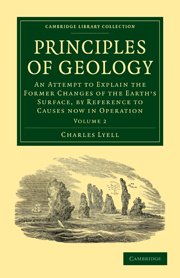 Principles of Geology
Principles of Geology Summary
Geographical Distribution and Migrations of Fish.
Although we are less acquainted with the habitations of marine animals than with the grouping of the terrestrial species before described, yet it is well ascertained that their distribution is governed by the same general laws. The testimony borne by MM. Péron and Lesueur to this important fact is remarkably strong. These eminent naturalists, after collecting and describing many thousand species which they brought to Europe from the southern hemisphere, insist most emphatically on their distinctness from those north of the equator; and this remark they extend to animals of all classes, from those of a more simple to those of a more complex organization, from the sponges and medusae to the cetacea. “ Among all those which we have been able to examine” say they, “ with our own eyes, or with regard to which it has appeared to us possible to pronounce with certainty, there is not a single animal of the southern regions which is not distinguished by essential characters from the analogous species in the northern seas.
The fish of the Arabian gulf are said to differ entirely from those of the Mediterranean, notwithstanding the proximity of these seas. The flying-fish are found (some stragglers excepted) only between the tropics,—in receding from the line they never approach a higher latitude than the fortieth parallel. Those inhabiting the Atlantic are said to be different species from those of the eastern ocean. The electric gymnotus belongs exclusively to America, the trembler, or Silurus electrims to the rivers of Africa; but the torpedo, or crampfish, is said to be dispersed over all tropical and many temperate seas.
- Type
- Chapter
- Information
- Principles of GeologyAn Attempt to Explain the Former Changes of the Earth's Surface, by Reference to Causes now in Operation, pp. 105 - 122Publisher: Cambridge University PressPrint publication year: 2009First published in: 1832
